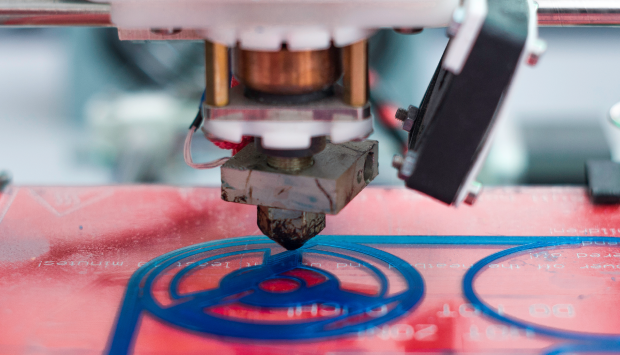3D Printer Emissions Require Study, Standards

Latest News
July 12, 2017
3D printers can increase efficiency and reduce waste for certain manufacturing applications, but they also produce chemical and particle emissions that could potentially pose an environmental hazard, depending on the material involved.
Underwriters Laboratories (UL) recently convened a conference on 3D printer emissions, and based on its own two-year research study, has concluded that industry-wide efforts should be undertaken to measure and control those emissions.
During the Summit on the Safety Science of 3D Printing, UL noted that 3D printers can be a source of volatile organic compounds (VOCs) and ultrafine particles. Those pollutants can affect indoor air quality and expose people to emission that cold lead to “adverse and chronic health concerns.”
According to UL’s study, PLA and ABS filaments both produce roughly equal levels of ultrafine particles. UL also identified 50 VOCs among the emissions, including styrene and lactide. The study was conducted by UL’s Chemical Research Initiative, the Georgia Institute of Technology, and the Emory University Rollins School of Public Health.
UL plans to continue studying the toxicity of these emissions, and will help develop standards for measuring printer emissions.
“Based on research results and safety concern over these emissions, stakeholders agreed to move forward with UL taking a lead role to develop an ANSI standard for measuring and assessing printer emissions for safe use in indoor spaces,” said Dr. Marilyn Black, senior technical advisor to UL.
While the research presented at the conference doesn’t indicate an imminent safety or health risk, experts suggest using printer enclosures, filters, and ventilation to reduce exposure to emissions.
According to the proceedings:
Emissions from 3D printing can be a source of ultrafine particles in the nanoparticle size range as well as a source of certain VOCs, some of which are odorants, irritants, and chronic or acute hazards. These exposure levels are generally low and complete risk assessments have not been conducted, but a precautionary approach of providing good building ventilation with outdoor air exchange and local ventilation in areas where 3D printing is occurring would be prudent.
Summit proceedings are available here.
Source: Underwriters Laboratories
Subscribe to our FREE magazine, FREE email newsletters or both!
Latest News
About the Author
Brian Albright is the editorial director of Digital Engineering. Contact him at [email protected].
Follow DE





